Help us improve our
Learn-Along guides!
At The Children’s Hour, we are constantly working to improve our work and tools for educators. It helps us to hear from users to make these guides the best they can be, and to collect your feedback.
Thanks for taking our brief survey after you use our guides.
Katie Stone & Lorraine Archibald
Grade Levels
3-7
Subjects
Science, Social Studies, Art, Math, Media Literacy
Grade Levels
3-7
Subjects
Science, Social Studies, Art, Math, Media Literacy
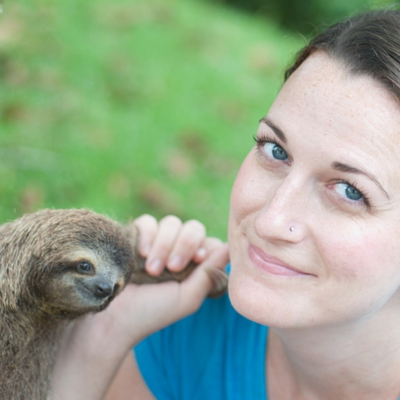
Sam Trull, director and co-founder of The Sloth Institute
We hope you enjoyed hearing our show about Sloths. We interviewed Georgeanne Irvine, Director of Publishing at the San Diego Zoo, and author of Teaching Tornero: The True Story of a Sloth Superstar, as well as Sam Trull, the co-founder and director of the Sloth Institute in Manuel Antonio, Costa Rica. We discovered so much about these amazing creatures and how to protect them. Practice what you’ve learned and find out more with the information and activities below!
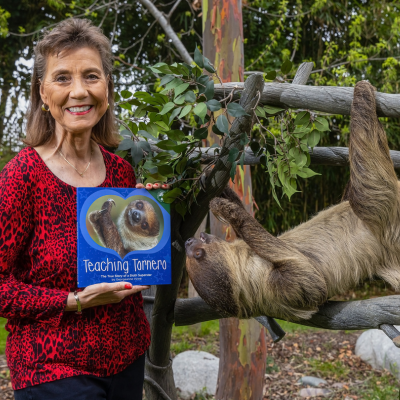
Georgeanne Irvine, Author of Teaching Tornero: The True Story of a Sloth Superstar
Did you know? Fun facts about Sloths!
- Giant ground sloths evolved in South America around 35 million years ago, and migrated into North America, starting around 8 million years ago. They have evolved greatly since then.
- Sloths today are found throughout Central America and northern South America, including parts of Brazil and Peru. They live high in the trees of tropical rainforests.
- Their fur grows from stomach to back and in the opposite direction as most other animals, this helps rain to drip off them easily when they are hanging upside down, which is most of the time!
- They come down from the trees once a week to poop, this is when they are most vulnerable to being attacked by predators.
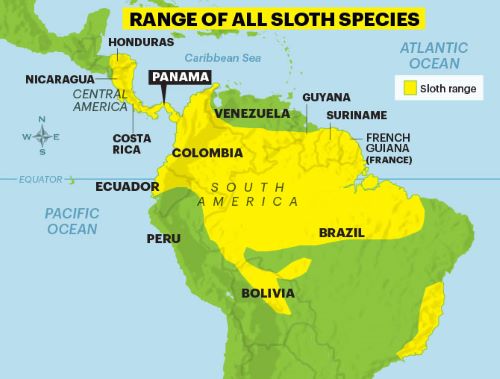
Range of all sloth species. Image Source
Sloths Venn Diagram
From our guests we learned that there are 7 different types of sloth species that are categorized into two groups, two fingered, and three fingered. These two types of sloths are considered to have gone through convergent evolution. As Sam Trull taught us, “they do have a lot of differences, but the similarities that they have are due to evolving in the same environment, not from having a common ancestor.”
Activity: Can you tell the differences between the two types of sloths? Using the information that you heard in the show, complete this Venn Diagram Activity. If you do not have a google account to copy the document, draw the diagram on paper and put the numbers in the correct location.
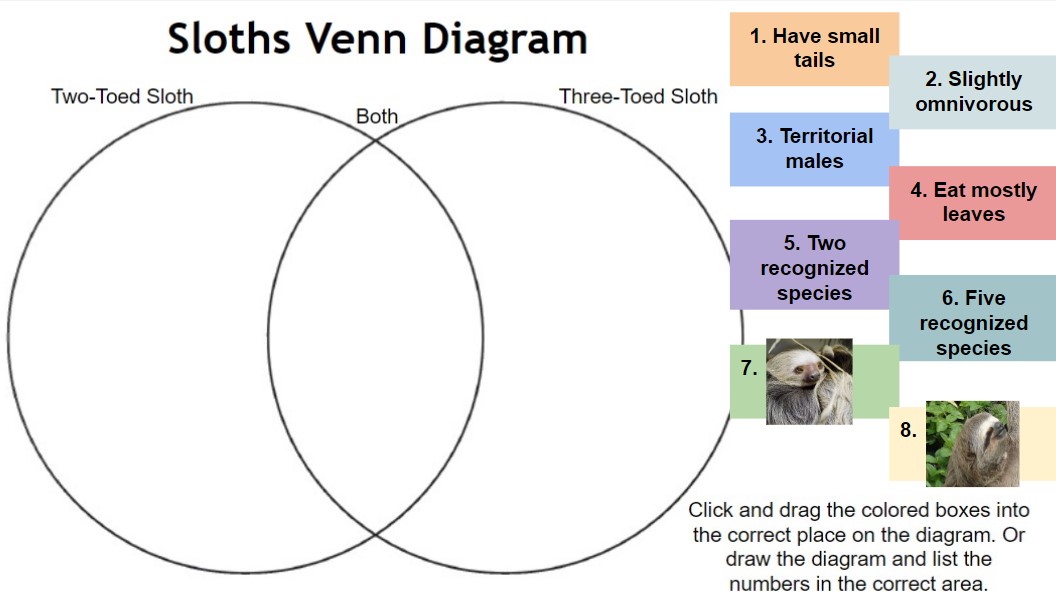
Species
A group of living things that share a lot of characteristics
Convergent Evolution
When separate species evolve similarly but do not share a common ancestor
Vocabulary
Human Encroachment
Human led activities such as building, farming and more that lead to the destruction of habitats and environments of plants, animals, and living organisms
Behavioral Ecology
The study of an animal’s behavior in relation to its environment
Data Collection
The process of observing, gathering and measuring information such as details and patterns.
Sloth Rescue: Problem Solving Activity
We heard from Sam Trull from The Sloth Institute about the many ways in which sloths are put in danger. Some of the threats to sloths are:
Habitat destruction
Human encroachment
Cars
Tourism industry
Dogs
Powerlines
Trull and her team work to problem solve and think of creative ways to help sloths who face these risks. Some examples include, they teach people who live near sloths how to trim their trees in ways that allow sloths to still utilize the branches well, and they even create ‘Sloth Speedways’ or trails of rope bridges that encourage sloths to avoid dangerous areas.
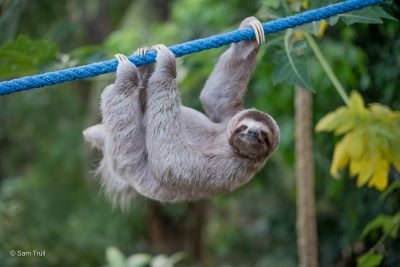
Sloth on a Sloth Speedway. Image Source
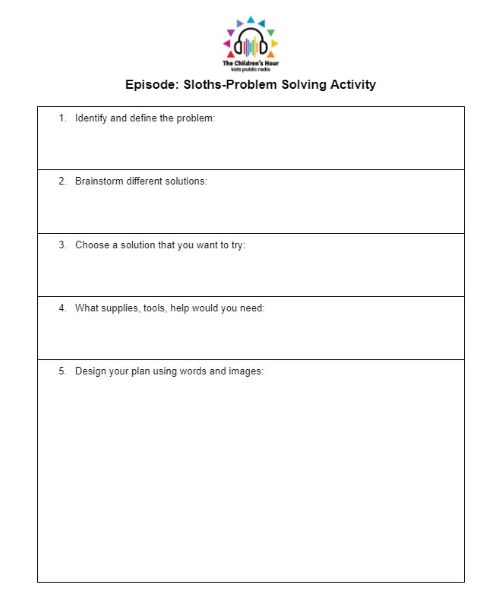
Activity: Imagine that you are a sloth rescuer! Choose one of the threats faced by sloths and think of a creative way to help solve the problem to help the sloths. Your idea can be an invention, a plan, a way to educate others or any other way you think you can help sloths. Use this template to design your plan with words and images.
Behavioral Ecology: Data Collection Informed Action Challenge
The Sloth Institute helps rescued and handraised sloths. They rehabilitate and support them so that they may be released into the wild and survive on their own. In order to do this, they use a very important strategy, they collect data! Their Sloth Tracking Program allows them to study the sloths’ Behavioral Ecology, to understand their behaviors and make sure they are doing well in their environment.
Activity: What animals do you see in your community? Without interfering with them in a negative way, collect data on the animal you wish to focus on. For example, when and where do you often see this animal? What behaviors do you see them doing? Keep notes on the information you track and create a graph that helps share your findings. Using your data, draw a conclusion about the behavior of the animal you are studying. If needed, think of a way that you could use your data to help them. With support from an adult, create an invention that would be helpful to them, or make posters/flyers that help to teach other people.
Example of a data chart from The Sloth Institute. Image Source
A team of tracking program researchers from The Sloth Institute. Image Source
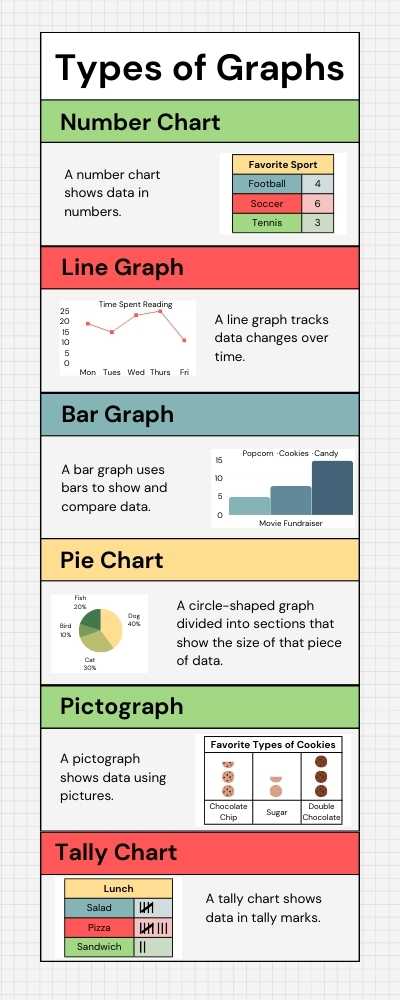
Different types of charts that can be created from your data collection. Infographic from Canva
Tourism and it’s effects on Sloths
As we learned on our show, many people love sloths for how interesting and cute they are. This leads to people wanting to get close to them and to do things like hold, pet, and take pictures with them. This has led to people in the tourism industry to capture sloths, taking them away from their natural habitats and keeping them in ways that are cruel, or damaging to the species like keeping them in small cages. If you want to get close to a sloth, the kind thing to do is visit them at a place that gives them a good home, such as the San Diego Zoo where out guest Georgeanne Irvine works. Make sure to do your research and support places that respect the sloths they hold in captivity, such as The Sloth Institute founded by our guest Sam Trull. To learn more about being a responsible wildlife tourist and to get ideas on how you can enjoy animals in your area, check out this article.
Using the information you heard and read, along with your own ideas, finish the sentences:
A responsible sloth tourist:
Is…..
Says……
Does…..
Does not….
Learning from Sloths: Energy Consumption
Sloths take a long time to digest and convert their food into energy. They save their strength and energy by sleeping often and moving very slowly or staying still when they are awake. People can learn from sloths by conserving energy to save money, resources, and to help the planet. People can also apply that lesson to think about the food they eat and how well it gives them energy. Take a look at the foods that can provide you with energy, which ones do you like? How do you feel when you eat them? Challenge yourself to add more of these foods to your diet. Talk with a friend or family member to think of ideas of when and how you can incorporate these into your diet!
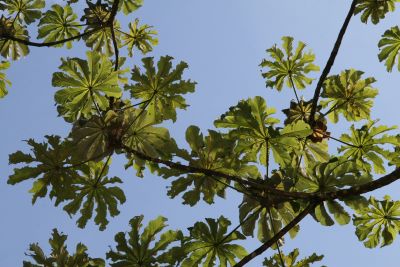
A favorite food of three toed sloths are the leaves of the Cecropia tree. Image Source

Healthy Foods to Boost Your Energy Image Source
Career Card: Animal Conservation
Click on the links below to learn more about these careers. You’ll learn about the personalities, knowledge, skills, and abilities of people in that career, and find out how much money you could make, what type of education you would need, the technology you may use and more!
Zoologist
Wildlife Biologist
Forest Technician
Wildlife Photographer
Natural Sciences Manager
Animal Caretaker
Conservation Scientist
Habitat Restoration Specialist
Park Ranger
Environmental Science Professor
Environmental Policy Analyst
Activity: Choose one of the careers you have researched and create a trading card that highlights the skills, personality and abilities of someone who works in this career. Draw and color your card or use one of these resources to create a digital card. Trading Card Creator, Pokecard Creator
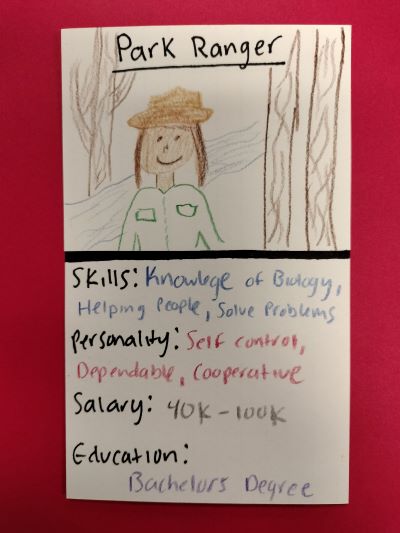
Design your career card to be creative and unique!
Sloths Media Journal
After watching one or both of the videos, use the guiding questions to reflect on what you learned. Share your information with another person.
What did I already know about this topic?
What did I learn from the video?
What new questions or wonders do I have?
More Activities and Resources
Download a sloth activity booklet, make a mask, and more from The Sloth Conservation Foundation
Learn about sloths and their ecosystem and view supporting materials from PBS Learning Media
Learn more about two toed sloths from the San Diego Zoo Wildlife Alliance
See the bones of a giant ground sloth by taking a virtual tour of the Smithsonian Museum of Natural History
See if you can spot Latte, a Hoffman Two Toed Sloth on the live Sloth Cam from the Philadelphia Zoo
